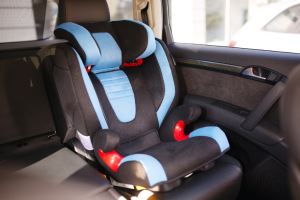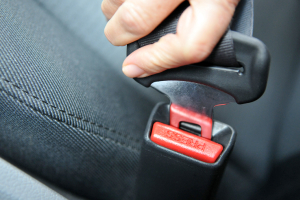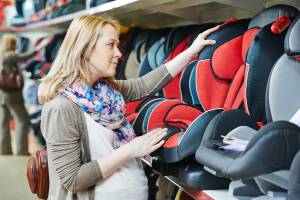
Motor vehicle safety has to be at the top of your priority list whenever you get in a car. That is particularly true when children are involved. Children should be in a car or booster seat until they are old, tall, or heavy enough to sit in an adult seat.
Some children should be in a rear-facing car seat, and others should be in a forward-facing car seat. Even if one's children are too large for a car seat, one should use a booster seat until the kids are old enough to sit in an adult seat and use a seat belt properly.
Car seat law is strict in Washington, so familiarize yourself with the guidelines below. Then, if you have questions about Washington car seat laws or believe a child restraint system injured your child, contact a personal injury lawyer to assist you. You should always take child passenger safety seriously.

In the state of Washington, it is crucial to follow the guidelines and recommendations published by experts in the field. That means looking at what the American Academy of Pediatrics says about child car seat recommendations. Some of the essential points to keep in mind include the following:
All infants and toddlers should be in a rear-facing car seat until they reach the maximum height or weight allowed by the car seat manufacturer. Once children exceed the weight or height limit listed by the car safety seat manufacturer, your child should then use a forward-facing car seat. In general, convertible car seats allow children to ride rear-facing until at least 2 years old.
In addition, the safest place for your child's car seat is the middle of the back seat. Your child should be as far away from the doors and windows as possible.
Once your child exceeds the height or weight limit printed on the rear-facing car seat, you should transition to a forward-facing car seat. Ideally, this car seat has a harness on it. Your child should sit in a forward-facing car seat until they exceed the weight or height limit printed by the car safety seat manufacturer. Car seats typically accommodate children until they are 65 lbs or more.
Once your child starts going to school, he may be too heavy for a forward-facing car seat. Now, your child should be sitting in a booster seat. Your child should sit in a booster seat until he can properly use the vehicle seat belt. Usually, this means your child should reach a height of 4 feet, 9 inches. Most children reach this point between 8 and 12 years of age.
All children under 13 years should be in the back seat. Children should always wear a vehicle safety belt, even after transitioning from a booster seat to an adult seat. Make sure the vehicle seat belt goes across the chest and not across the neck. If your child cannot wear a vehicle seat belt properly, this is a sign that he should be in a booster seat.
Like car seats, the safest location for booster seats is in the middle of the back seat. That is because you want your child to be as far from the windows and doors as possible. Ideally, the middle back seat should have a shoulder and a lap belt. Make sure your child uses both.

In Washington, every passenger requires to wear a safety restraint. Seat belts can save lives. If you are caught not wearing a seat belt, you may have fines up to $124.
According to the state code, everyone over 16 sitting in a motor vehicle with the engine running must wear a safety belt properly. It means the safety belt should be adjusted and secured correctly. You cannot turn on the car unless every child under 16 wears a seatbelt appropriately.
It is also critical to be familiar with the child restraint law in the state of Washington. According to the state code:
If you have questions or concerns about the child restraint system in your car, you should reach out to a dealership for a thorough inspection.

When looking for a car seat for your child, there are several essential points to remember. Remember that child safety restraints vary, and multiple car seats are available.
For instance, you might be interested in a convertible car seat, which can transition from a rear-facing to a forward-facing car seat when your child is big.
You should also assess the child restraint manufacturer and the child safety restraint quality when looking for a car seat.
Even though you have plenty of options when looking for an approved child restraint device, you need to find a harness to keep your child secure. A properly fitted seat belt is critical to ensure your child's safety. You do not want your child to slide out of the harness.
Consider talking to your pediatrician if you have difficulty deciding between front or rear-facing car seats. Your pediatrician will have several recommendations, and he might even have the resources to get you a car seat at a discount.
Remember that once your child outgrows a car seat, he should be sitting in a booster seat. You must follow the same process when looking for a booster seat for your child. Make sure the booster seat is secured using a lap and shoulder belt, and ensure your child is sitting in the middle of the back seat. It is the best passenger seating position for a child.

Your child's safety should be the top priority when you drive a motor vehicle. Car crashes can happen anytime, and the best car seat could save your child's life. If you have questions about your child's car seat following a motor vehicle accident, contact Bungay Law Firm for help. We are ready to provide you with a free consultation.
Contact Bungay Personal Injury Law today For a Free Consultation 206-769-0093
Contact Bungay Personal Injury Law today For a Free Consultation 206-769-0093
Request A
Start your no-obligation Free consultation with us by filling out the form below and we will contact you about your case within 24 hours.
"*" indicates required fields